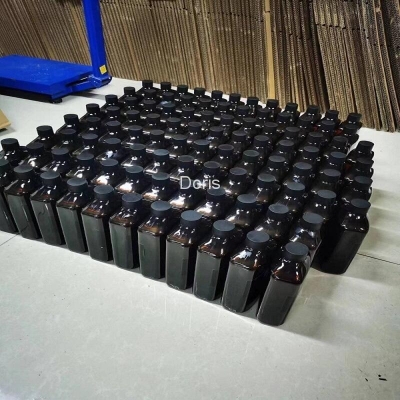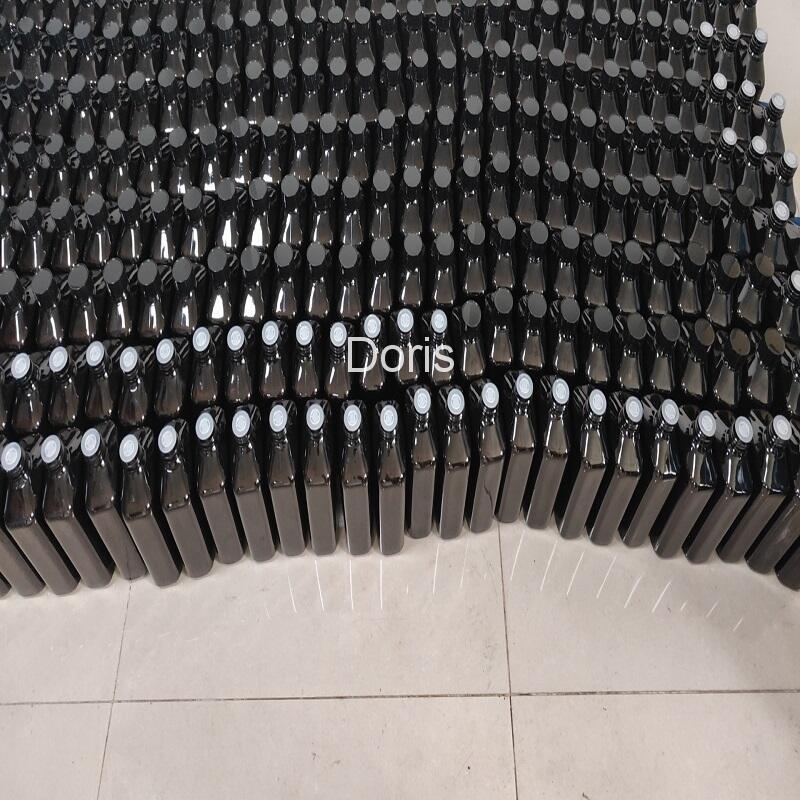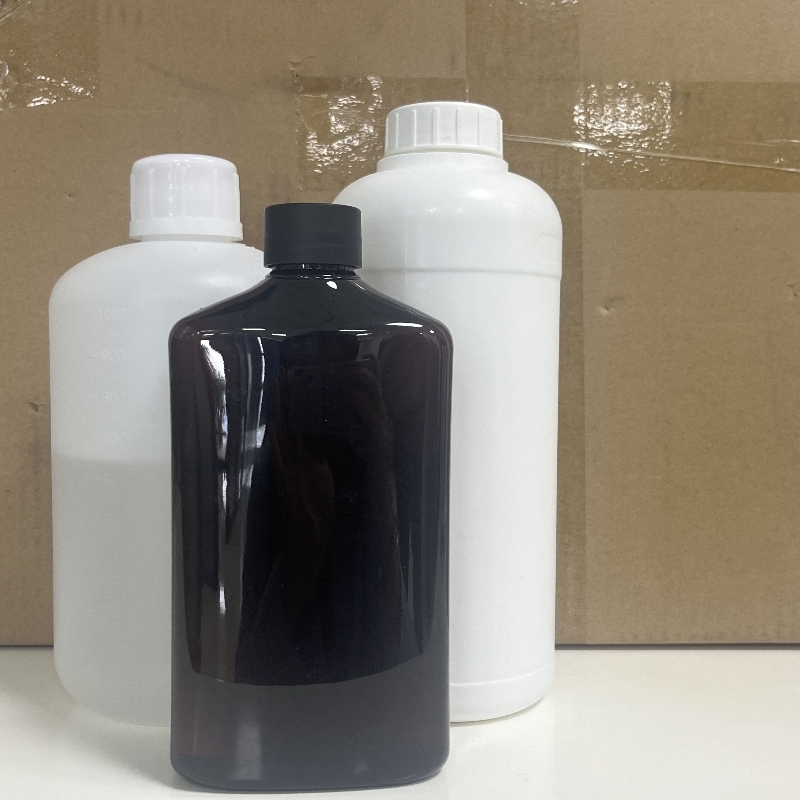-
Categories
-
Pharmaceutical Intermediates
-
Active Pharmaceutical Ingredients
-
Food Additives
- Industrial Coatings
- Agrochemicals
- Dyes and Pigments
- Surfactant
- Flavors and Fragrances
- Chemical Reagents
- Catalyst and Auxiliary
- Natural Products
- Inorganic Chemistry
-
Organic Chemistry
-
Biochemical Engineering
- Analytical Chemistry
- Cosmetic Ingredient
-
Pharmaceutical Intermediates
Promotion
ECHEMI Mall
Wholesale
Weekly Price
Exhibition
News
-
Trade Service
Today, Roche held Roche Pharma Day.
this is Roche's annual presentation to investors of the company's future research and development priorities, update the latest developments in the later stages of the research and development pipeline project, and introduce the company's hot-spot projects of important investor activities.
on this year's Roche Medical Day, Roche executives presented the company's latest developments in research and development pipelines in areas such as oncology, neurological and rare diseases, and hepatitis B virus infection, and shared the company's research and development strategy, as well as Roche's research and development and promotion direction in China.
today's Pharmaceuticals Content team will share the highlights of Roche's Medicine Day with readers.
, Roche's vision for the next 10 years is to reduce the burden of drug research and development on society while providing more benefits to patients, said Bill Anderson, Roche's chief executive, who has invested in innovation and integrated solutions for patients.
to achieve this goal, investment innovation is an essential part.
, which has always focused on innovative drug development, has been awarded 36 FDA-awarded breakthrough therapies since 2013.
expects Roche's late-stage research and development pipeline to include 23 new molecular entities by the end of fiscal 2020.
the development of innovative therapies can reduce the economic impact of disease on society by providing patients with more specific, effective and shorter treatment times as early as possible.
addition to continuing to increase investment in research and development and encourage innovation.
use data and insights to provide integrated solutions for patients that can further improve their clinical outcomes.
integrated solutions include early individualized diagnosis through comprehensive genomic testing, guiding the selection of the best treatment option based on the patient's molecular biology characteristics, and using real-world evidence (RWD) to better capture clinical outcomes.
this integrated solution will give more patients the best treatment options.
Roche's commitment to providing integrated solutions for patient health care (Photo: Resources: Resources) The latest dynamic oncology area of the late-stage oncology research and development pipeline is one of Roche's research and development priorities, and the company has developed the heavy PD-L1 inhibitor Tecentriq, which has been approved by the FDA as a single drug or in combination with other therapies to treat a variety of cancer types including liver cancer, tri-negative breast cancer, non-small cell lung cancer.
in the treatment of triple-negative breast cancer, Roche will further expand the scope of Tecentriq, the development of Tecentriq combination therapy in complementary therapy and new complementary treatment environment.
The latest developments in the treatment of HR-/HER2-breast cancer are highlighted on the research and development day: Roche's RG6171 is a third-generation selective estrogen-binding inhibitor (SERD), which not only selectively degrades the estrogen-incessor (ER), but also prevents ER from activating its target gene by binding to ER before degradation.
this unique mechanism of action allows it to inhibit the transcription adjustment function of ER before degrading it, thus enhancing its effectiveness.
SERD, which has the potential for "best-in-class" therapy, has shown promising results in phase 1b clinical trials with CDK4/6 inhibitor palbociclib to treat patients with ER-in-HER2-breast cancer.
Phase 3 clinical trials are expected to start in the second half of this year.
introduction to Roche's third-generation SERD (Photo Source: Resources1) Another innovative treatment highlighted is a PI3K alpha inhibitor called RG6114.
this inhibitor has a dual mechanism of action, not only specifically inhibits PI3K alpha, but also degrades the mutated PI3K alpha protein, which makes it more safe while producing stronger and longer-lasting inhibitions.
in phase 1/1b clinical trials, RG6114 was used in combination with estrogen therapy and CDK4/6 inhibitor palbociclib, and has shown encouraging results in patients with solid tumors with PIK3CA mutations.
phase 3 clinical trial to treat patients with HR-/HER2-metastasis breast cancer with the PIC3CA gene mutation has been launched in the first quarter of this year. introduction to
PI3K alpha inhibitor RG6114 (Photo source: Resources1) Roche's expertise in targeted therapies, cancer immunotherapy, and liquid biopsies in the treatment of lung cancer enables it to provide patients with integrated care options from diagnosis to therapy.
With the rise of precision therapies based on specific molecular markers, today's lung cancer patients can be classified into more than a dozen categories based on the biomarkers carried by the tumor, and Roche's pipeline already has approved therapies for many of these patient types.
, for example, the "unlimited cancer" therapy entrectinib can treat patients with non-small cell lung cancer who are ROS1-positive and NTRK fusion.
with Blueprint Medicines, the recently approved RET inhibitor Gawreto is able to treat lung cancer patients with the RET gene mutation.
, Roche is developing an irreversible co-price inhibitor that targets KRAS G12C mutants.
preclinical studies, it has shown good ability to inhibit tumor growth and has the potential to work in synergy with other therapies.
, the KRAS inhibitor, called GDC-6036, began Phase 1 clinical trials in the second quarter of this year.
A brief introduction to Roche KRAS G12C inhibitors (Photo: Resources) The liquid biopsy DevelopOne Liquid CDx, developed by Roche's Foundation Medicine, has recently been approved by the FDA to assess the genomic characteristics of cancer patients.
has conducted a Phase 3 clinical trial called B-FAST, using this liquid biopsy to guide first-line treatment options for first-time NSCLC patients.
clinical trial has reached clinical ends in screening APK-plus patients for treatment with APK inhibitor Alecensa, and data on patients treated with Tecentriq based on tumor mutation load are expected to be released later this year.
this integrated diagnostic and treatment process may help more NSCLC patients get the most effective treatment options.
clinical trial design based on liquid biopsy to select the best treatment for patients (Photo Source: References) In the development of cancer immunotherapy, Roche's TIGIT inhibitor tiragolumab was used in combination with Tecentriq to reduce the risk of disease progression or death by 70% in patients with first-line treatment of PD-L1 high expression (TPS-gt;50%)NSCLC.
has started a critical Phase 3 clinical trial in patients with Phase 3 NSCLC.
of clinical development of neurological disorders and rare disease pipeline aducanumab shows the importance of patients continuing to receive high-dose antibody therapy.
, Roche is conducting two Phase 3 clinical trials to explore the effects of gantenerumab doses and dosage methods on efficacy.
, the company also uses its unique brain shuttle technology to bind the monoclonal antibody to a fragment of the TfR1 antibody, allowing it to cross the blood-brain barrier more efficiently, improving its ability to degrade A-beta in the brain.
Roche has reaped a lot this year in the treatment of neurological and rare diseases, with the first oral treatment for spinal muscular dystrophy (SMA), Evrysdi, and the anti-IL-6 libid anti-IL-6 body antibody Ensprying for the treatment of optic neurospinal cord disease disorder (NMOSD) both approved by the FDA this year.
follow-up results for Ocrevus, which treats multiple sclerosis (MS) in the united states, showed that it was able to continuously significantly delay the progression of disability in patients.
on Medical Day, Roche introduced a potential "best-in-class" BTK inhibitor for MS treatment.
BTK inhibitor, called fenebrutinib, is an oral, reversible non-co-priced BTK inhibitor that crosses the blood-brain barrier.
it inhibits not only the activation of B cells, but also myelin cells in the blood, including macrophages and small glial cells, which may reduce both acute and chronic inflammation in MS patients.
has launched two Phase 3 clinical trials to assess the effectiveness of fenebrutinib in patients with resuscutation MS and primary progressive MS.
Introduction to BTK inhibitors for the treatment of MS (Photo Source: Reference 1) In the treatment of Alzheimer's disease, a number of biopharmaceutical companies targeted amyloid protein (A beta) failed to achieve the desired results in late-stage clinical trials, including Roche's anti-amyloid monoantenerumab.
in the face of setbacks, Roche has not given up on new drug research and development in this area.
's A-beta antibody, which uses brain shuttle technology to improve gantenerumab's cross-blood-brain barrier schematics (Photo Source: Reuters) Another in-study treatment for Alzheimer's disease is the monoclonal antibody semorinemab, which targets the Tau protein.
by binding to the Tau protein, it may prevent the spread of the disease-ing Tau protein.
phase 2 clinical trials to treat patients with asymptomatic or mild Alzheimer's disease is expected to be announced later this year.
hepatitis B virus (HBV) infection remains an unsealed medical need worldwide.
, there are more than 257 million hepatitis B patients worldwide, including 86 million in China.
and the current standard treatment cure rate is very low, patients need life-long treatment.
to a functional cure for hepatitis B, it is important to reduce the level of HBsAg on the surface of hepatitis B.
Roche adopted a "three-pronged" research and development strategy.
will be innovative antiviral therapy and immunomodulants, and strive to achieve functional cure of hepatitis B.
innovative "three-pronged" treatment was the RNAi therapy RG6346, developed in cooperation with Dicerna, in the research and development strategy of Roche's HBV (Photo Source: Supplied)
RNAi therapy, which targets the liver, inhibits the expression of a variety of HBV genes and, in Phase 1 clinical trials, can consistently suppress HBsAg levels for more than 336 days.
introduction to RNAi therapy RG6346 for the treatment of hepatitis B (Photo Source: Resources) Another in-study therapy RG7907 can lead to the wrong assembly and degradation of nuclear proteins by binding to HBV nucleoproteins, thus preventing the successful assembly of viral enclosures.
is effective for all major HBV subsypes, and in Phase 1 clinical trials, all patients had significantly lower levels of HBV virus DNA within 1 week of treatment.
introduction to HBV nucleoprotein assembly regulator (CpAM) (Photo source: Resources) The third in-study therapy RG7854 is a TLR7 agitant.
TLR7 is able to detect single-stranded viral RNA and mediate the production of antiviral cytokines and the activation of degenerate cells.
unique design of the RG7854 allows it to be specifically activated only in the liver.
is expected to launch Phase 2 clinical trials in the third quarter of this year to test the effectiveness of TLR7 astrists in association with nuclear protein assembly regulators.
company also has an unannoled innovative immunomodulant that will enter Phase 1 clinical trials.
roche, a research and development and promotion initiative in China, notes that the time interval between the approval of innovative therapies in the U.S. and China has been reduced since 2015.
these changes are expected to bring innovative therapies to Chinese patients more quickly.
Currently, Roche has several drugs on China's Medicare Drug Catalog (NRDL), and Roche is discussing with Chinese authorities the inclusion of PD-L1 inhibitor Tecentriq, haemophilia A therapy Hemlibra and antibody-coupled drug Kadcyla in the List of Medicare Drugs for the benefit of more patients.
infection with hepatitis B virus and liver cancer are high in China.
addition to developing innovative hepatitis B virus infection therapies, Roche's combination therapy of Tecentiq and Avastin has been approved by the FDA for first-line treatment of liver cancer patients.
combination therapy is expected to be approved in China in the fourth quarter of this year, less than five to six months after it was approved in the United States.
because of China's large population, the number of people affected by rare diseases is relatively large.
Roche said in a Medical Day report that the oral treatment for SMA, Evrysdi, is expected to be approved in China in the first half of next year, Enspryng for NMOSD has been approved for priority review in China, and Hemlibra, an innovative treatment for haemophilia A, is expected to be approved in the first half of next year to treat haemophilia patients without clotting factor VIII inhibitors.
innovative treatments for rare diseases are expected to be approved in China (Photo Source: Supplied)







